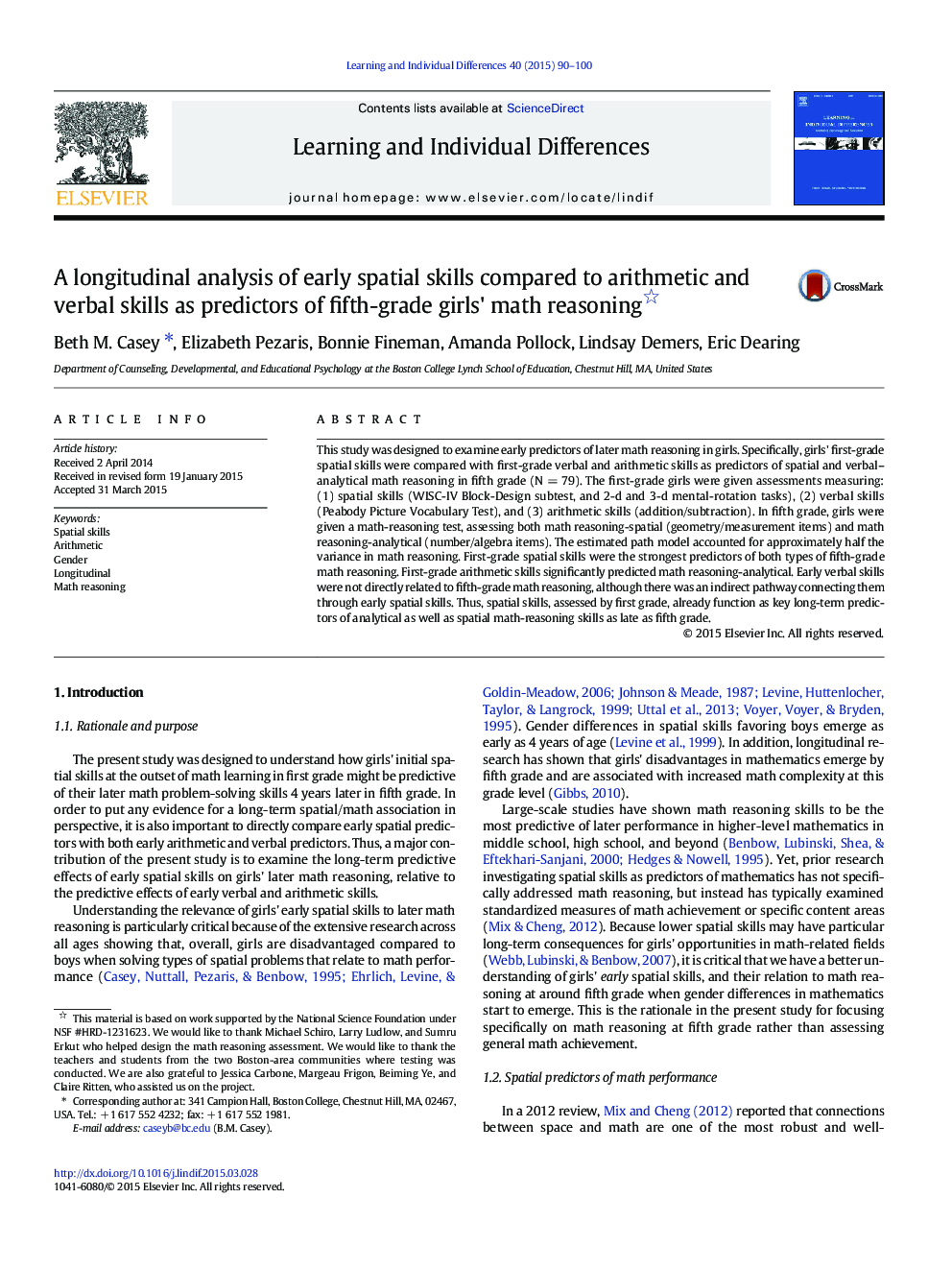| Article ID | Journal | Published Year | Pages | File Type |
|---|---|---|---|---|
| 364720 | Learning and Individual Differences | 2015 | 11 Pages |
•5th grade longitudinal follow-up of 1st grade girls—assessing predictors of math•1st grade girls were assessed on spatial, verbal, and arithmetic skills.•5th graders were given math-reasoning test assessing spatial and analytical skill.•Estimated path model accounted for half the variance in 5th grade math reasoning.•Early spatial skills strongest predictor of 5th grade spatial and analytical math
This study was designed to examine early predictors of later math reasoning in girls. Specifically, girls' first-grade spatial skills were compared with first-grade verbal and arithmetic skills as predictors of spatial and verbal–analytical math reasoning in fifth grade (N = 79). The first-grade girls were given assessments measuring: (1) spatial skills (WISC-IV Block-Design subtest, and 2-d and 3-d mental-rotation tasks), (2) verbal skills (Peabody Picture Vocabulary Test), and (3) arithmetic skills (addition/subtraction). In fifth grade, girls were given a math-reasoning test, assessing both math reasoning-spatial (geometry/measurement items) and math reasoning-analytical (number/algebra items). The estimated path model accounted for approximately half the variance in math reasoning. First-grade spatial skills were the strongest predictors of both types of fifth-grade math reasoning. First-grade arithmetic skills significantly predicted math reasoning-analytical. Early verbal skills were not directly related to fifth-grade math reasoning, although there was an indirect pathway connecting them through early spatial skills. Thus, spatial skills, assessed by first grade, already function as key long-term predictors of analytical as well as spatial math-reasoning skills as late as fifth grade.
